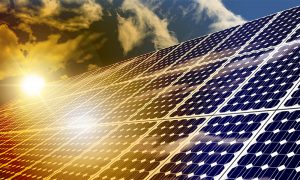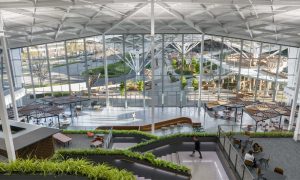All inclusive growth
Peter Fort, CEO of Ras Al Khaimah Free Trade Zone Authority tells Shruthi Saraf how the free zone’s cost effectiveness is paying dividends

Peter Fort, CEO of Ras Al Khaimah Free Trade Zone Authority in an interview with Shruthi Saraf tells how the free zone’s cost effectiveness is paying dividends.
How is your free zone different from the numerous others that dot the country?
The investment demand is tremendous and costs are rising across UAE while businesses are seeking opportunities to invest in a very cost effective manner. The ability to basically combine all the advantages that the other free zones offer with cost effectiveness and high quality client services is what differentiates us. People don’t realise, especially outside the free zone space, that it is still very difficult to set up even within the free zones because there is a lot of bureaucracy, a lot of requirements and sometimes, it can take a long time. You will see when you speak with clients from other freezones that it is very difficult going through the process. Businesses want to set up quickly, they basically want the red tape to be cut down as much as possible and they are looking for proper client support. We think of ourselves, not as much as a part of the government, which we are (we are 100% owned by the government), But unlike many of the other free zones, we want to think of ourselves as their business partners, as a service provider to our clients. We look at our business from a commercial perspective. And as a service provider we do everything that is possible to make our clients happy. So those two key differentiations are huge in the sense that they don’t get a lot of focus in the other free zones.
How cost effective is RAK FTZ compared to others?
It is really simple – it’s in terms of real estate. We have the least rents whether they are looking at offices, warehouses or land, as we aim to be cost effective as compared to others. When you look at more developed countries, growing for a long time, such as US or EU, you will see that different kinds of clients go to different areas. Because UAE is a fairly young country and the development has been fairly young, that sort of differentiation has not quite taken place. For example, in New York city, there are no factories in Manhattan. Why? Because the land is too expensive. Over the decades those factories have migrated to New Jersey and the outer regions. This is the same process that is going on in the UAE and it is not just in manufacturing. In RAK, we saw that opportunity and started leveraging that long time ago. So we believe, in the next two years, it is a track that will continue and gather speed, especially across the UAE.
Are you looking to build a specialised hub in Ras Al Khaimah?
We already have different parks that specialise in different types of clients. We have the industrial park which focuses on the heavy industries and a technology park which focuses on light industry. We are certainly looking at industrial specialisation over time but right now it is just the focus rather than an exclusion. We don’t pursue a policy of exclusion. If you look at Dubai, each free zone has a very specific focus. If you are outside of that business activity, you cannot invest in that free zone. That is not something we would like to pursue. We are open to all activities as long as they are properly licensed as required and are not regulated activities such as finance or insurance. However, over the next year or two, we are going to increase our focus across streams. You already see clusters around automobiles manufacturing here. There is only one automobile assembly plant in all of UAE and it is located in RAK. We also have a number of other large automobile related industries in RAK so that’s one cluster. There is cluster around building materials as well, such as RAK Precast. So there are definitely clusters that will begin to grow. Currently we are working overtime to absorb the demand and growth that we are seeing. We are looking at the growth of facilities, ensuring that we are investing to enable our clients to continue. There is no plan to start fragmenting the free zones.
How have you been developing infrastructure to assimilate this growth?
All our facilities are fully electrified. Currently, electricity is being sourced from different sources within RAK. Including FEWA, there are at least three different sources from where we are drawing power, plus there is residual generator capacity as well. Even though all our clients have full access to utilities, we are behind the scenes, standardising it, so that it is uniform and allows future growth. Basically there is connectivity for all the utilities ahead of the development not after. What happens in UAE all the time is that they build the buildings and then they think about the roads and the utilities. We are being careful in terms of making sure we have all the infrastructure in place, developed in parallel with the construction of the new facilities.
Is the power situation still bad in Ras Al Khaimah?… Read the complete interview on Infrastructure ME digital issue.

























